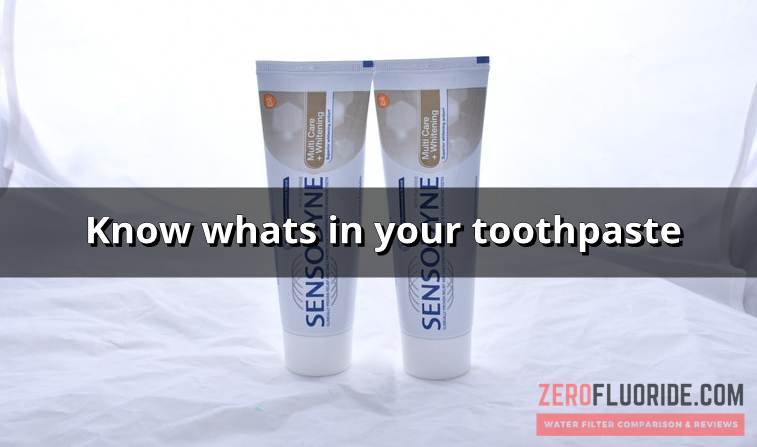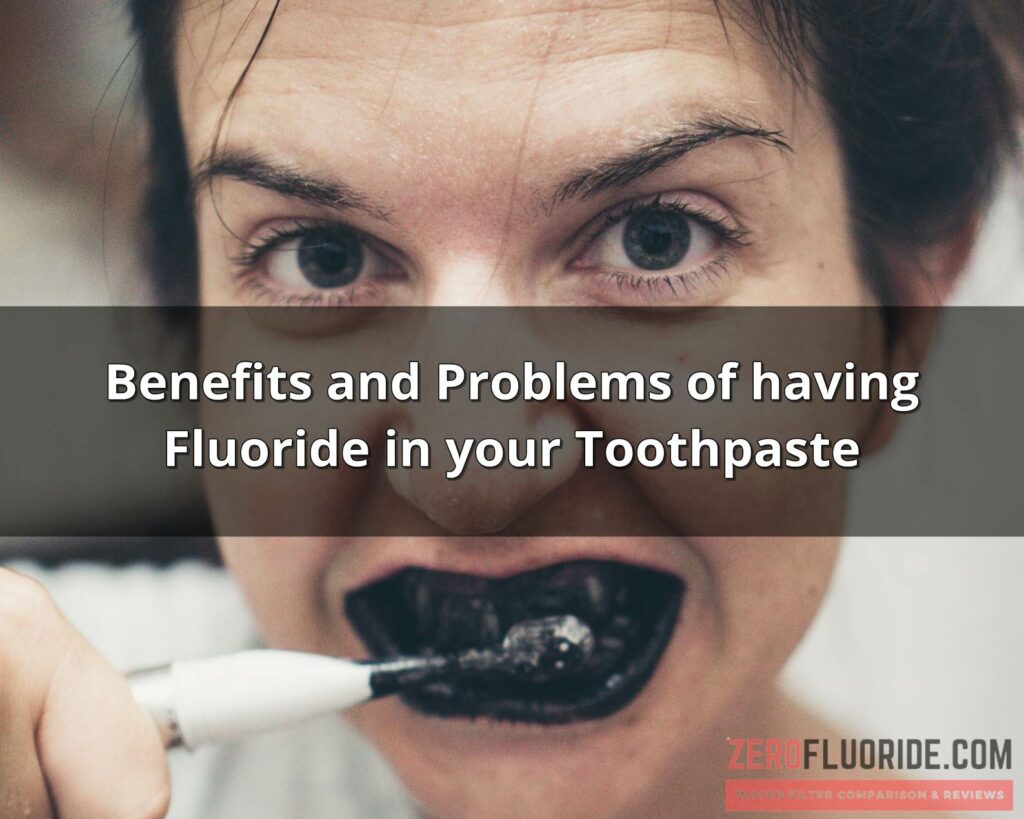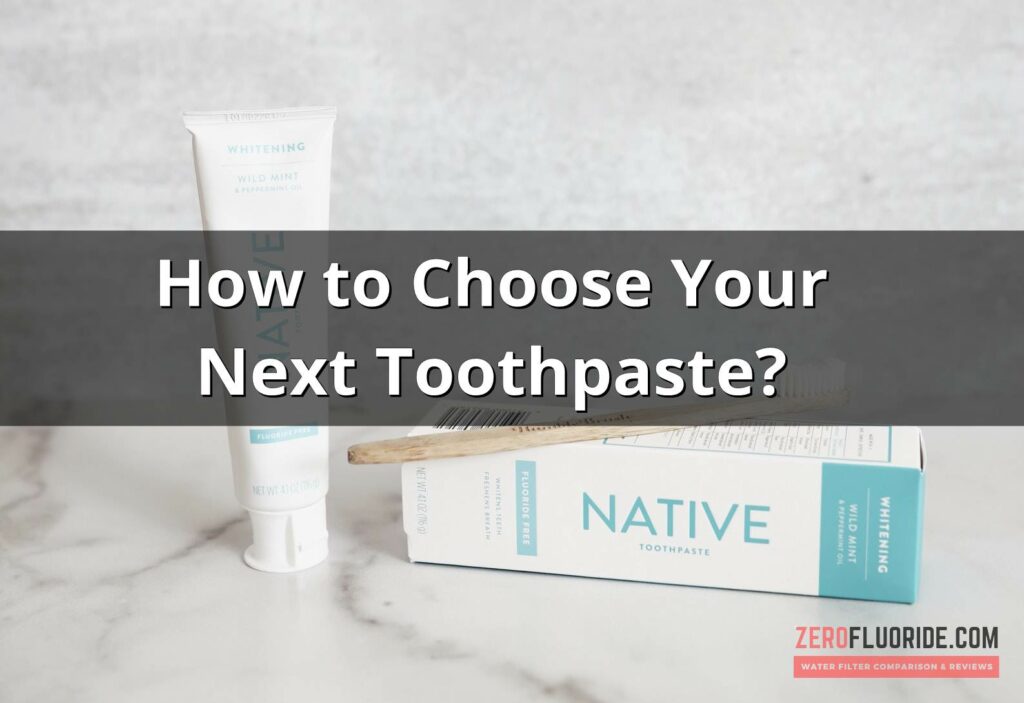Fluoride is a naturally found mineral that people tend to add to water, food, and different items.
A lot of kinds of toothpaste contain fluoride as it has benefits for ensuring tooth health.
An excess of fluoride can present dangers to health, yet the amounts contained in toothpaste are, for the most part, safe assuming an individual uses the toothpaste as exhorted.
And in this article, we will be taking a good look at what is fluoride and why it is added to tubes of toothpaste.
And along with that, we will also be covering the benefits and risks associated with fluoride, along with helping you choose the best toothpaste.
What Ingredients Does Toothpaste Contain?
Makers have planned toothpaste to control dental plaque.
Plaque is a meagre layer that forms on teeth subsequent to eating sugars. The microscopic organisms in plaque have different tooth finishes, causing rot and pits.
Individuals use toothpaste with a toothbrush to delicately clear away plaque and other flotsam and jetsam from their teeth.

- Abrasives, for example, calcium carbonate or calcium phosphate. These remove anything adhering to the outer layer of the teeth without scratching them.
- Folios like sodium alginate or xanthan gum. These give flexibility and structure to the toothpaste and assist with keeping it from drying out by restricting water to it.
- Humectants like glycerol or propylene glycol. These hold water to prevent the hardening of the toothpaste.
- Foaming specialists like sodium lauryl sulfate or sodium alkylsulfo succinate.
- Additives to forestall the development of microorganisms.
A few tubes of toothpaste contain different fixings, contingent upon their design:
- Fluoride, which reinforces veneer and prevents cavities.
- Flavourings like spearmint, peppermint, or menthol.
- Sugars, including sorbitol, glycerol, and xylitol.
- Anti-sensitivity specialists include strontium chloride or potassium nitrate.
But, let us get into a bit more detail as we proceed.
What is fluoride, and for what reason is it in toothpaste?
Fluoride is a naturally happening mineral that exists in:
- Soil
- Rocks
- Water
- Foods
It is a significant piece of teeth development in kids younger than 7, as it reinforces creating enamel.
In kids and grown-ups, it likewise dials back the acid-delivering ability of plaque, which shields teeth from rot.
In numerous urban communities and nations, specialists add fluoride to the drinking water, which has been shown to diminish tooth rot by at least 25 per cent.
Fluoride toothpaste gives an extra layer of assurance against dental rot and plaque buildup.

Advantages of fluoride
Fluoride secures teeth against rot by reinforcing the enamel development and easing back acid creation of microscopic organisms brought about by plaque.
Fluoride secures teeth against a cycle called demineralization.
It happens when microscopic organisms combine with sugars to make acid that disintegrates the tooth.
Further, fluoride advances remineralization.
This process carries calcium and phosphate particles to the tooth to make a new surface area that is acid safe.
Dangers of fluoride
An excessive amount of fluoride can prompt dental fluorosis.
Fluorosis is a condition that changes the color of tooth veneer.
This staining generally appears as white or now and again brown coloured spots.
Fluorosis ordinarily happens when kids who are in the teeth framing years swallow toothpaste rather than spitting it out.
A majority of cases of dental fluorosis are exceptionally mild.
In moderate to extreme cases, more observable and broad enamel changes occur, which includes dark spots and pits for the teeth.
The danger of getting a lot of fluoride from toothpaste is low and a threat to kids who are bound to swallow toothpaste.
Ways to reduce the danger of dental fluorosis one must follow these basic steps:
- Oversee kids age six and under to deter gulping toothpaste.
- Use just a pea-size measure of toothpaste between the ages of 3 to 6.
- Talk with a specialist or dental specialist about the utilization of fluoride toothpaste for kids under two years.
- Typically a rice-sized measure of toothpaste is suitable for kids under 2.
- Persistent exposure to undeniable degrees of fluoride can likewise prompt skeletal fluorosis.
This happens when fluoride develops in bones, causing stiffness and torment.
In the most extreme cases, tendons can calcify, bringing pain and trouble moving.
Commonly this is an issue in regions with naturally happening undeniable degrees of fluoride in drinking water.
Well, now let us help you in picking the best toothpaste to aid in preventing the above-stated issues.
How to pick the best toothpaste?

There are so many toothpaste choices to browse it very well may be hard for people to figure out which one is the right one for them.
The primary inquiry to pose is assuming somebody needs toothpaste that contains fluoride.
Provided that this is true, many of the powerful brands have an assortment of fluoride items accessible.
In the event that you are not, search for regular toothpaste, which is bound to be without fluoride.
Assuming the decision is to buy a fluoride toothpaste, kids under three years of age should use toothpaste with a fluoride level of 1,000 sections for every million (ppm).
Anybody older than three should use toothpaste with a fluoride level of 1,350-1,500 ppm.
Whenever you pick a toothpaste, the packaging might indicate:
- Contains fluoride
- Has active ingredients to further improve dental health like diminishing tooth hygiene, forestalling veneer disintegration or gum diseases.
- Does not have sugar flavouring ingredients.
Past that, pick a toothpaste in view of any personal inclinations or specific dental requirements.
Some options are brightening teeth, tending to tooth sensitivity, controlling tartar, and picking various flavours.
An individual should check out the ingredient name to make sure that the product contains nothing that would cause an allergic reaction.
With all of that being said, you might be wondering if fluoride could actually help your teeth or not?
Honestly, we are not too sure. It is nothing similar to how your body can treat it if you permit it to.
However, regardless of whether fluoride has a slight advantage, is it worth the adverse consequences?
Mainly, there are so many adverse effects of fluoride, showing us we need not bother with fluoride to have excellent dental health.
In all actuality, people have relied upon healthy and cavity-free teeth for our existence.
Recall the times when people needed to hunt their food.
There were no dental specialists or soft food sources to bite on.
Which is why our bodies have implicit systems like remineralization to assist with protecting our teeth and need not bother with the help of a chemical substance like fluoride.
Our bodies did not require it for millennia, and we needn’t bother with it now.
And that wraps up this article.